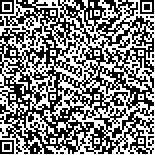下载中心
优秀审稿专家
优秀论文
相关链接
摘要

遥感影像时—空融合可集成多源数据高空间分辨率和高时间分辨率互补优势,生成时间连续的高空间分辨率影像,在遥感影像的动态监测与时序分析等方面具有重要应用价值。然而,现有多数研究往往基于单一数据产品对时—空融合算法进行评价,而在实际生产应用中,需要验证算法在多种遥感产品数据的融合表现;此外,目前研究大多基于“单点时刻”进行评价,忽略了时—空融合在“时间线”上的有效验证。本文提出遥感影像时—空融合的“点”—“线”—“面”多角度综合质量评价策略,基于Landsat TM和MODIS影像,建立了时—空融合系列数据集,包括地表反射率、植被指数和地表温度,并在此基础上从单时相(“点”)、时间序列(“线”)、多种数据产品(“面”)多个角度对4种典型融合算法进行定性和定量的综合评价。结果表明,基于不同产品类型的数据集更能充分验证算法性能,且结合单点时刻和时间序列的评价更加客观。
Remote sensing images with both high spatial and high temporal resolutions are highly desirable in various applications. However, due to technical limitations of remote sensing imaging system and other factors, the acquired remote sensing images have to make a fundamental trade-off between high spatial and temporal resolutions. For example, the MODIS images have high temporal resolution, its spatial resolution is low; On the contrary, the Landsat images have high spatial resolution with relatively lower temporal resolution.Spatio-temporal fusion can integrate the complementary advantages of high spatial resolution and high spectral resolution, respectively, of multi-source remote sensing images, to generate time-continuous images with high spatial resolution. This has important application value in remote sensing image dynamic monitoring, time-series analysis, and other aspects. To the best of our knowledge, at present, most of studies generally evaluated the spatio-temporal fused images based on a single type of remote sensing data, such as the surface reflectance data or the Normalized Difference Vegetation Index (NDVI) remote sensing product, etc. However, how well a spatio-temporal fusion method performs in practical applications? This should be comprehensively assessed from different aspects based on different types of remote sensing data products. In addition, most of studies performed the evaluation of a spatio-temporal fusion method based on the fused image at a single phase. However, for spatio-temporal fusion, the final target is actually to obtain time-series fused images, the quality evaluation of the fused images from the temporal dimension should be also taken into account. Whereas, to the best of our knowledge, the quality evaluation for time-series fused images is not comprehensively considered in the existing studies. In this paper, we proposed to evaluate the spatio-temporal fusion methods from the comprehensive perspective of single time point, time series, and multiple different remote sensing data products. In this paper, spatio-temporal fusion data sets, including surface reflectance data set, NDVI data set, and the Land Surface Temperature (LST) data set were established based on Landsat and MODIS remote sensing satellite images. In addition, some typical spatio-temporal fusion methods were reviewed, and the performance of four spatio-temporal fusion algorithms, including the Spatial and Temporal Adaptive Reflectance Fusion Model (STARFM), Enhanced STARFM (ESTARFM), Flexible Spatio-Temporal Data Fusion (FSDAF), and the Spatial and Temporal Nonlocal Filter-based Fusion Model (STNLFFM), were qualitatively and quantitatively evaluated based on the proposed data sets of different kinds of remote sensing data products, i.e., the surface reflectance, NDVI, and LST. In addition, the quality evaluation from the perspective of both single-time-point and time-series dimensions were performed. The experimental results show that the performance of spatio-temporal fusion algorithms can be more comprehensively verified based on different type of data sets, and the evaluation combined with single time point and time-series data set is more objective.

